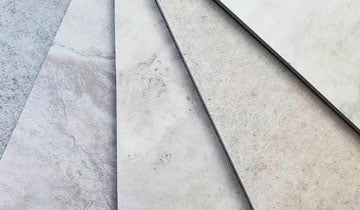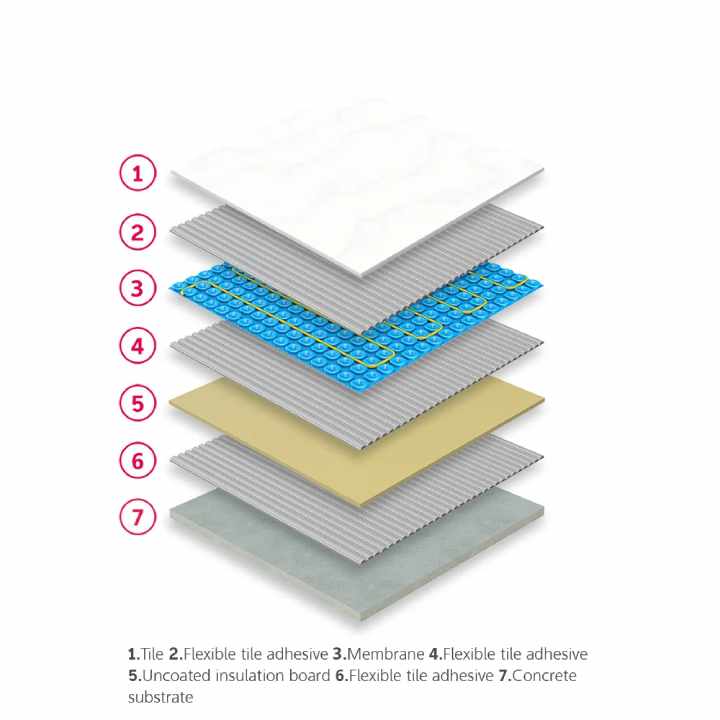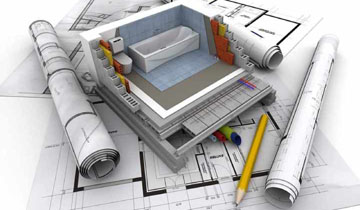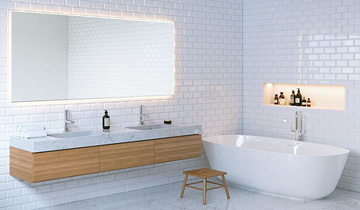7 min read
How thick is underfloor heating?
When looking into installing underfloor heating, ‘how thick is underfloor heating?’ ranks in the top three of the most common questions asked. There...

When it comes to choosing between ceramic or porcelain tiles and natural stone it used to be an easier decision because if you wanted the authentic look, natural stone was the way to go. However, with vast improvements made to the finishes of ceramic and porcelain tiles over the years, it’s getting tougher. Both are a great floor finish for underfloor heating, but if you choose to go the natural stone route, what do you need to look out for if you are installing electric underfloor heating?
Natural stone is a great floor finish to use with underfloor heating because they conduct heat and store heat so well. If you’re thinking of going down the natural stone route, the vast majority of stone suppliers will state which options are best for underfloor heating, but a couple of examples would be;
The main risk with a natural stone floor is cracking of the tile or the grouted joints. There are few reasons for this. Temperature variations in the tile and/or substrate due to heating. cooling cycles and even seasonal temperature changes can all contribute.
Another risk when installing a natural stone floor over underfloor heating is the risk of accidentally snagging the heating cable with the trowel when applying adhesive.
Finally, you must ensure that the subfloor that you are installing your electric underfloor heating on is level. This is particularly important to ensure the heat is distributed consistently and not effected by differing thicknesses of adhesive cover.
Some of these risks can be mitigated by using a flexible cement-based tile adhesive and grout as well as making adequate provision for expansion and contraction.
A heating and decoupling system such as ThermoSphere Membrane has been designed to prevent cracking, lifting and delamination of tiled floors. The membrane acts like a decoupling layer allowing the floor finish to move independently from the substrate. This helps to mitigate any potential damage caused by expansion and contraction, whilst at the same time, holding the heating cable in place via dimples (or studs) which helps to protect the heating cable during installation.
Using ThermoSphere Membrane, you can use a two-dimple spacing for an output of 195W/m2 (faster heat up time) or a three-dimple spacing for an output of 130W/m2 (great for well-insulated buildings).
Here’s an example of a floor build-up using a marble floor finish:

When cost is a concern, often (and unfortunately) the first thing to be removed is insulation board. This is bad news for any homeowner. If you don’t include insulation board, the heating cable will warm the layer below and the layer above at the same rate. Therefore, taking twice as long for the floor to heat up to the right temperature. This will cost the homeowner more money to run.
Insulation board significantly reduces heat loss and less time is needed to reach optimum temperature, which in turn saves on heating bills. By installing insulation board, you can improve the efficiency of an electric underfloor heating system by up to 50%!
As always, if you have any questions about electric underfloor heating, contact one of the team. Just head on over to the contact us page to start the conversation.

7 min read
When looking into installing underfloor heating, ‘how thick is underfloor heating?’ ranks in the top three of the most common questions asked. There...

5 min read
Underfloor heating is a brilliantly versatile heating system that can be installed in any room in a home…including conservatories.

5 min read
This is one of the most commonly asked questions and for good reason! With so many brands of underfloor heating out there including Warm Up, Heat Mat...